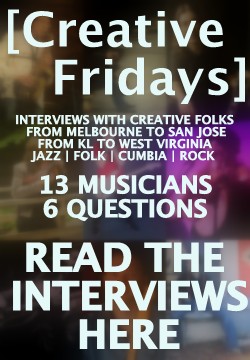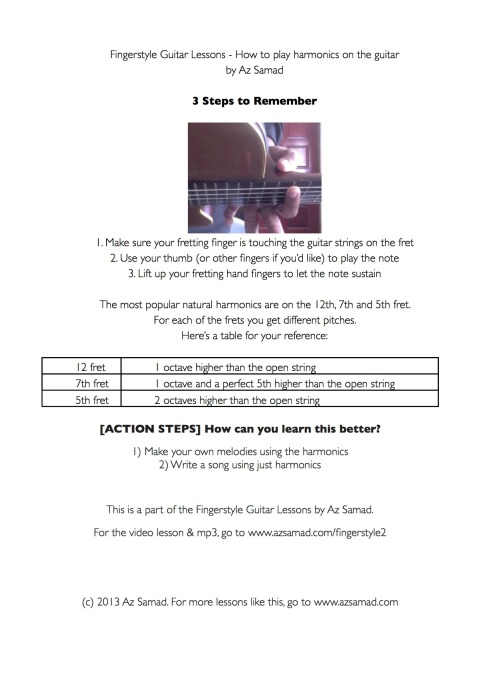10 Steps For Guitarists To Learn New Songs
 Thursday, September 18, 2014 at 3:21PM
Thursday, September 18, 2014 at 3:21PM Occasionally, I get asked about how I practice for performances and recording sessions. A big factor is how much time I have to prepare for it. In most cases, I try to prepare as much as I can and as early as possible. Here are the 10 steps that I take to learn songs.
1. If there are no lead sheets or charts of specific parts to learn, I find several versions of the same song to listen to. If there is a guitar part written out, I study the equipment requirements, guitar sound needed, technical requirements, range of the guitar part and note any difficult sections. After this, I try to find recordings of the song/orchestra piece if it is available. My main sources are usually YouTube and Spotify.
2. I start off by listening to the most definite version of the song. I listen casually first, at this stage I just try to get the vibe, groove and feel of the song first.
3. After repeated listenings, I take out a piece of paper or open a blank Google document to write down the general song form. I look out for sections like the intro, verses, choruses, bridges, interludes, guitar solos and outro. I'll write or type this out so I can see the overall roadmap for the song.
[REAL LIFE EXAMPLE]
For a session recording for YouTube artist NanaSheme in her cover of John Legend's All of Me, I typed the entire songform in a spreadsheet file because it was easier to notate the bars using the program. The songform is heavily driven by the lyrics so I also wrote down key words to mark the different sections. You can watch the final result here: All of Me - John Legend (Cover By NanaSheme)
4. The next step is for me to count how many bars each of these sections are. I pay attention whether there are any odd meters, time signature changes and sometimes will notate if there are any rubato or sections that slow down or speed up.
5. I usually take a short break at this point or listen to the song casually again.
6. The next time involves figuring out the chord progression of the song. I work out section by section and listen closely to the bassline and chordal instruments. I also notate any essential rhythmic attacks that are important for the song.
7. After I have an overall idea of the chord progression, I then look out for any signature parts or background melodic lines that I might need to play. I often get gigs where I play in duo or small group settings. For these gigs, I often will try to cover the main background lines to create a fuller arrangement.
[REAL LIFE EXAMPLES]
When I played acoustic guitar in a trio to accompany Malaysian hip hop artist Altimet on his song, 'Bangkit' - I played an assortment of the keyboard lines and some of the horn parts.In The Great Malay Songbook, a project with vocalist Cheryl Tan, I played the background vocal parts to Bila Larut Malam in my guitar accompaniment. For our version of Zainal Abidin's Hijau, I follow the original bass line and keyboard part closely to get the feel closer to the original recorded version.
8. After I have a notated version of the piece, I then start practicing the song. I work on the piece as a whole first and then slowly zoom in to practice each section at a time. As I understand the piece more, I may correct my written chart and guitar parts. Common corrections for me include adding specific left and right hand fingerings, fixing the chord quality, writing down exact voicings and taking note of dynamics.
9. I also will look at the lyrics of the song if available and consider that so that I can play the parts better in relation to the meaning of the piece.
[REAL LIFE EXAMPLE]
When I performed with Andy Flop Poppy for our Akustika I set at Dewan Filharmonik Petronas, I pay attention to the lyrics so I can see how the song fits with our other material in the set from a thematic standpoint.
10. Lastly, I record my performance of the piece so that I can find any weak spots, mistakes and things to work on. At this point, I repeat the practice and recordings as many times as possible before the actual rehearsals with other musicians, the recording session or actual performance. At the rehearsals, I will also take note if I need to change any aspect of my guitar part.
Basically, the whole process is cyclic. It requires a feedback loop to learn and then refine. It's a long process for me but it's what it takes for me to get ready for a well-prepared performance.
Hope this helps you in your own learning & performance preparation.
All the best!
Az
-----
If you like this blog post, please sign-up for my mailing list to be informed of future videos & more! You'll also receive a free EP! Thank you! =)


